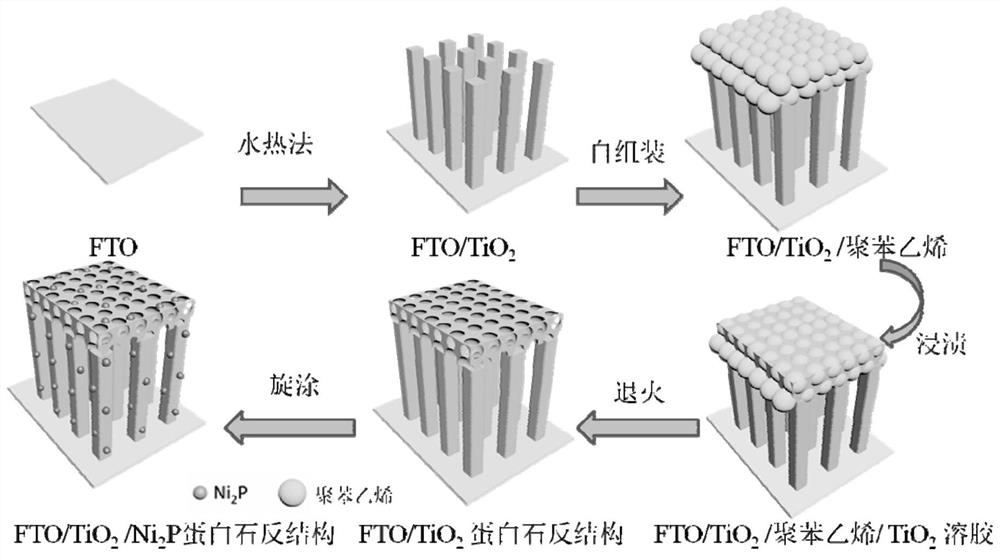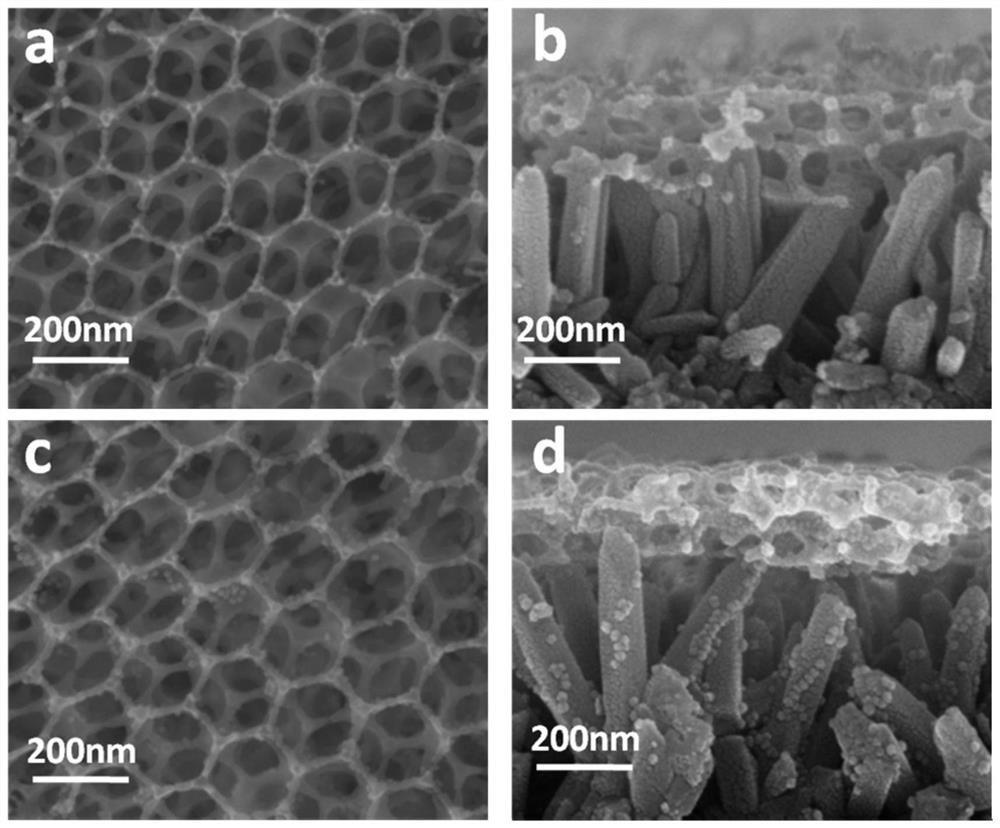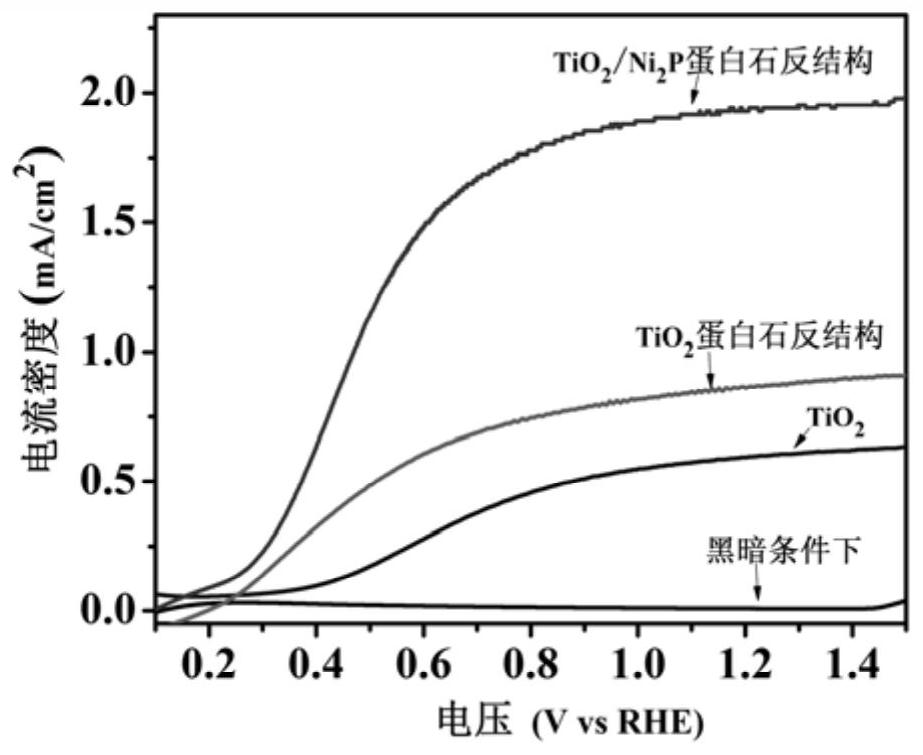One adopts ni 2 A method to enhance photocatalysis with p nanocrystals
A nanocrystalline and photocatalytic technology, applied in the field of nanomaterials, can solve problems such as the difficulty of separating hydrogen and oxygen, and achieve a good catalytic effect
- Summary
- Abstract
- Description
- Claims
- Application Information
AI Technical Summary
Problems solved by technology
Method used
Image
Examples
Embodiment 1
[0033] This embodiment provides a 2 Methods for P nanocrystals to enhance photocatalysis, such as figure 1 As shown, it includes the following steps:
[0034] (a) Loading TiO on the surface of substrate (FTO) by hydrothermal method 2 array; specifically:
[0035] (a1) Add 50mL of water and 50mL of concentrated hydrochloric acid (concentration: 30wt%) into a 150ml beaker and stir well to obtain a hydrochloric acid solution, then add 2mL of tetrabutyl titanate and stir until colorless to obtain a first precursor solution;
[0036] (a2) Fluorine-doped tin oxide (FTO) conductive glass (1.0 × 4.0 cm in size) was ultrasonically cleaned in acetone, ethanol, and deionized water for 10 minutes, and then dried under nitrogen flow; In the vinyl fluoride bottle (face down), take 10ml of the above-mentioned first precursor solution and add it to the polyvinyl fluoride bottle, so that the conductive glass part is immersed in the first precursor solution; put the polyvinyl fluoride bottle...
Embodiment 2
[0044] This embodiment provides a 2 The method for enhancing photocatalysis by P nanocrystals is basically the same as that in Example 1, except that step (b2) and step (b3) are repeated once, so that in TiO 2 The surface of the array is loaded with two layers of styrene nanosphere films; the obtained TiO 2 opal inverse structure such as figure 2 (a)- figure 2 (b) shown; the final TiO 2 / Ni 2 P opal inverse structure such as figure 2 (c)- figure 2 (d) shown. from figure 2 In (a), it can be seen that the structure of the upper and lower layers using PS spheres as a template is staggered from each other, which is beneficial to Ni 2 P nanocrystals were successfully loaded on TiO 2 In order to achieve a better catalytic effect; from figure 2 (b) can be seen that TiO 2 grow vertically on the FTO substrate, while on the TiO 2 The above is the structure of the opal inverse structure prepared by using PS beads as a template; from figure 2 (c) to figure 2 (d) it c...
Embodiment 3
[0046] This embodiment provides a 2 The method for enhancing photocatalysis by P nanocrystals is basically the same as in Example 1, except that step (b2) and step (b3) are repeated twice, so that in TiO 2 The surface of the array is loaded with three layers of styrene nanosphere film.
PUM
 Login to View More
Login to View More Abstract
Description
Claims
Application Information
 Login to View More
Login to View More - R&D
- Intellectual Property
- Life Sciences
- Materials
- Tech Scout
- Unparalleled Data Quality
- Higher Quality Content
- 60% Fewer Hallucinations
Browse by: Latest US Patents, China's latest patents, Technical Efficacy Thesaurus, Application Domain, Technology Topic, Popular Technical Reports.
© 2025 PatSnap. All rights reserved.Legal|Privacy policy|Modern Slavery Act Transparency Statement|Sitemap|About US| Contact US: help@patsnap.com



